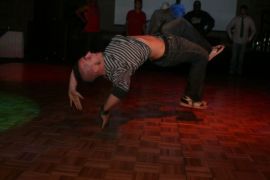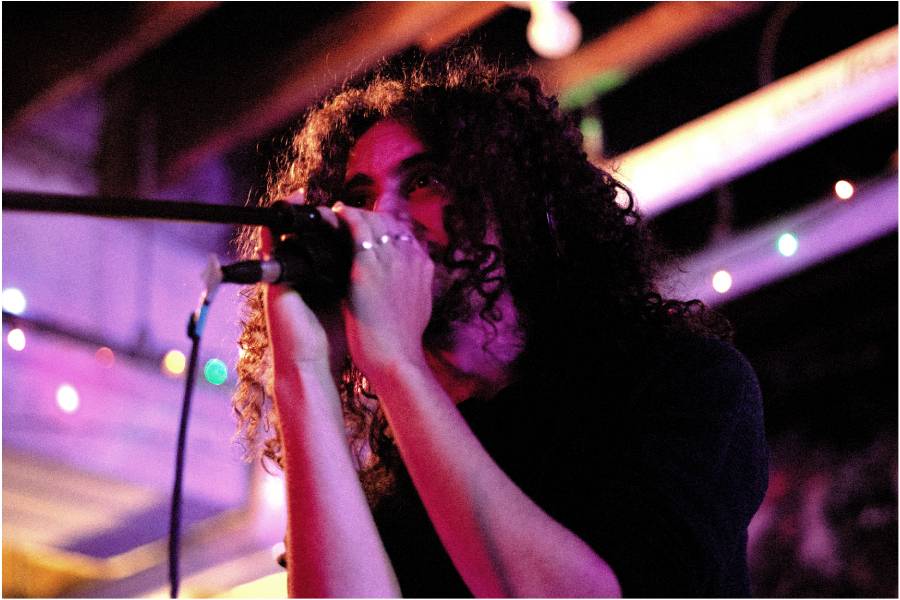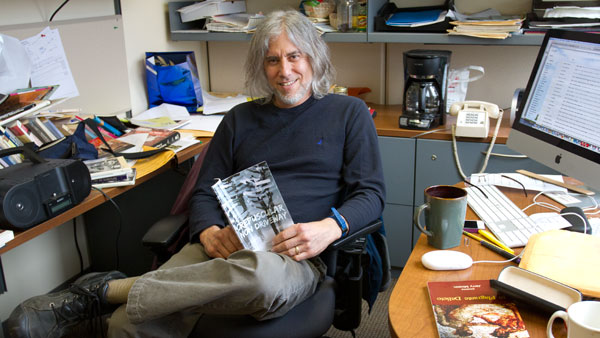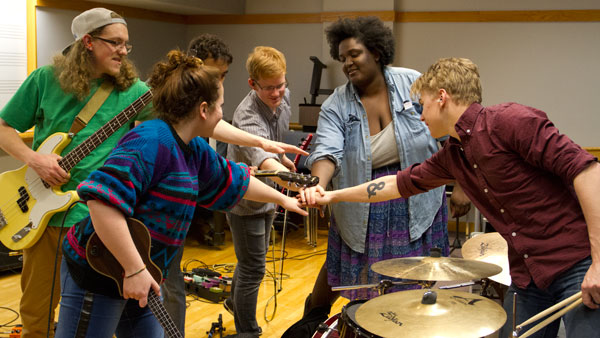At its best, hip-hop is a voice, says Professor Sean Eversley-Bradwell. It’s the noise of feet moving across the pavement mixed with the honking of horns at a nearby traffic light. It’s the jabber of everyday conversations passing by in jumbled unison. It’s lips pursed together, making music that buzzes and harmonizes with a beat that vibrates and pulsates. It’s words being transported around a circle, changing, rearranging and exchanging a meaning. At its best, hip-hop is a culture.

Eversley-Bradwell, assistant professor in the Center for the Study of Culture, Race and Ethnicity, is known by his students as the biggest “hip-hop head” on campus. Hip-hop heads eat, sleep and breathe hip-hop. They try to elevate it to a higher level in any way they can.
Eversley-Bradwell said even though Ithaca College’s hip-hop community is not very noticeable, it is present.
“The IC hip-hop community isn’t lacking anything,” he said. “The hip-hop community is larger than people anticipate, but because it’s underground where folks want it to be, it may not be as visible as people imagine.”
Eversley-Bradwell said, in short, that the meaning of hip-hop resides in the work done by different groups, each known for an individual style of communication.
“The five tenants of hip-hop are graffiti, DJing, emceeing, B-boying, and knowledge,” he said.
For the hip-hop-minded on campus — from DJs and emcees to break-dancers — hip-hop could have a bigger impact within the Ithaca community.
Senior Peter Bolanis, also known as DJ Emerson, is a well-known hip-hop DJ at the college. Bolanis DJed at The State of Hip-Hop: The Past, Present and Future event put on by the African Latino Society on Monday night and will DJ at the spoken word showcase held by Spit That! tonight. He said no matter how many times he promotes a particular event, he wishes there was more hip-hop influence in Ithaca.
“It’s not really a big community here,” he said. “It’s not like there’s big jam sessions in the middle of campus or block parties going down in The Commons.”
Junior Jon Kagan, fellow hip-hop head and emcee, said Bolanis has investigated hip-hop for years, learning where hip-hop came from, where it is going and why it matters.
“You know you’re a hip-hop head when you’re buying the albums and not downloading,” he said. “Me and him are buying the albums. We are trying to support the artists.”
Kagan represents the rap scene in Ithaca’s hip-hop community. As an emcee, he meshes lyrical verses with hip-hop beats. A regular at Spit That! showcases, Kagan, who goes by “Cosmo” onstage, bases his rhymes off of his exposure to different cultures while growing up outside New York City.
Kagan said it was in high school that he became interested in connecting with multicultural groups.
“In high school, a lot of people are just glued to one clique, and they’re not open-minded to other cultures,” he said. “I realized that I’m really everywhere kind of in that sense … in my music I really focus on a universal perspective.”
Sophomore Justin Lee, another DJ on campus, has been spinning hip-hop beats since his freshman year of high school. Currently, Lee DJs with his best friend, a student at Binghamton University, at parties in Binghamton at least twice a month. He said the music he plays supplies partygoers with the right mix of mainstream and intellectual hip-hop.
“DJs influence hip-hop because they are the ones exposing it,” Lee said.
Other hip-hop performers use their bodies to reflect energy and emotion. IC Breakers is a group that epitomizes hip-hop by interpreting rap lyrics through aggressive and acrobatic dance moves.
Junior Roniel Bencosme, one of the Breakers’ captains, said break dancing is rooted in hip-hop.
“In the ’70s, underground hip-hop was looked at as a negative scene and the break-dancers in gangs would represent their gang on the dance floor in a fight for respect,” he said. “Hip-hop is not fighting physically, but through art.”
Bencosme said break dancing is storytelling through body language.
“You see it, you feel it, you can touch it,” he said. “It’s always changing but always respecting the past by not forgetting about the original music, moves and culture.”
IC Hip-Hop, a club devoted to bringing the latest hip-hop dance moves to the floor, performs on campus at events for Family Weekend and IC After Dark.
Senior Lucia Cuttone, the club’s secretary, said IC Hip-Hop performs a variety of dancing styles, combining distinct moves pioneered by neighborhoods from Brooklyn to the Bronx.
“Hip-hop is a very soulful dance,” she said. “There’s not one set style. Each place has its own representation, which allows hip-hop to be a free representation of what you feel in the music.”
Soleful Soundz, an on-campus step team, also employs an element of hip-hop in their steps. Even though stepping isn’t directly a part of hip-hop, the use of old and new toe-tapping and sole-stomping combinations brings an aspect of hip-hop to the group’s routines.
Senior Artia Stewart, the club’s president, said hip-hop and step share a commonality in energy.
“Step is soulful and energetic, and hip-hop has the same aspects,” she said. “Oftentimes, a step team will take a hip-hop song and create a step around it.”
Bolanis said hip-hop is a lifestyle that stems from a passion within the soul that manifests itself in everyday life.
“It is a way of life with its own way of dress, its own language, its own physical art form and its own form of dance,” he said.
Across the board, members of the college’s hip-hop community agree that there is more to hip-hop than what is shown on MTV. Too often, they said, hip-hop is associated with trying to look cool or tough.
Kagan said the challenge is getting people to look past the mainstream hip-hop images created by commercialized rappers.
“People need to know that there is more to hip-hop than ‘superman-ing that ho’,” he said.




